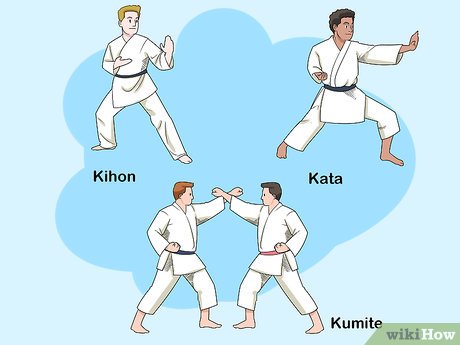
Precision and Power: Exploring Karate Techniques
Introduction
Karate, a martial art that originated in Okinawa, Japan, is a discipline that combines precision and power in its techniques. This ancient practice has gained popularity worldwide for its effectiveness in self-defence and personal development. This article will delve deep into karate techniques, focusing on achieving precision and power in your movements. Whether you’re a beginner or an experienced martial artist, there’s something valuable here.
Precision and Power: The Cornerstones of Karate
Karate is not just about physical strength; it’s about precision and power working in harmony. To truly understand and excel in this martial art, one must master both aspects.
The Role of Precision
Precision in karate involves executing techniques with accuracy and control. It’s about hitting the right target with enough force at the right time. Here are some key aspects of precision:
Proper Stance and Posture
In karate, everything starts with a solid stance. Your stance provides a stable foundation for your movements, enabling precise strikes and effective defence. Correct posture is crucial, whether in a front stance (zenkutsu-dachi) or a side stance (kiba-dachi).
Target Identification
Identifying the right target is essential for precision. Karateka (karate practitioners) train to recognize vulnerable points on the opponent’s body, such as vital organs and pressure points, to maximize the impact of their strikes.
Controlled Breathing
Controlled breathing (kime) is fundamental to precision. It helps you focus your energy and maintain control over your movements. Proper breathing ensures that your techniques are executed with accuracy and power.
The Essence of Power
Power in karate is synonymous with effectiveness. It’s the ability to generate force in your strikes, making them impactful and formidable. Here’s how you can harness the essence of power:
Hip Rotation
Power in karate comes from the hips. Proper hip rotation generates kinetic energy, which is transferred to your limbs during a strike. Learning to pivot and rotate your hips correctly can significantly enhance the power of your techniques.
Speed and Timing
Power isn’t just about brute force but also speed and timing. Karateka learn to strike swiftly and at the precise moment to catch their opponents off guard. Speed and timing amplify the force of a strike.
Strength and Conditioning
Physical strength and conditioning play a vital role in power development. Regular strength training and conditioning exercises help karateka build the muscles for powerful strikes.
Karate Techniques for Precision and Power
Now that we’ve covered the fundamentals let’s explore some specific karate techniques that exemplify precision and power.
Kata: The Art of Forms
Kata is a series of pre-arranged movements that simulate a fight against imaginary opponents. Practising kata allows karateka to refine their techniques, focusing on precision and power. Each kata has its unique movements; mastering them is a lifelong journey.
Kumite: Sparring for Real-World Application
Kumite is the practice of sparring with a real partner. It’s the laboratory where karateka tests their techniques in a dynamic and unpredictable environment. Kumite requires a balance of precision and power, as you must adapt to your opponent’s movements while maintaining control over your own.
Breaking Techniques: Demonstrating Power
Breaking techniques involve breaking boards, bricks, or objects with precise strikes. This showcases the tremendous power that can be generated through karate training. Breaking techniques are often used in demonstrations to demonstrate martial art’s effectiveness.
Self-Defense: Applying Precision and Power
Karate is not just a sport; it’s a valuable self-defence system. Learning how to defend yourself effectively requires applying both precision and power. Techniques such as joint locks, throws, and strikes to vulnerable areas are essential for self-defence.
FAQs
What should I wear for karate training?
Wearing a karate gi, a white uniform that symbolizes purity and simplicity, is customary for karate training. It allows for freedom of movement and is comfortable for training.
How long does it take to become proficient in karate?
Becoming proficient in karate varies from person to person. It depends on factors like your dedication, practice frequency, and the level of expertise you aim to achieve. Generally, it takes several years of consistent training to attain a high level of proficiency.
Can anyone learn karate, regardless of age?
Yes, karate is suitable for people of all ages. Many dojos (karate training facilities) offer classes for children, adults, and seniors. It’s always possible to start learning and benefit from karate.
Is karate only about fighting?
No, karate is not only about fighting. At the same time, it includes self-defence techniques and emphasizes discipline, respect, and personal growth. Many people practice karate for physical fitness and mental well-being.
Are there different styles of karate?
Yes, there are various styles of karate, each with its unique techniques and philosophies. Some well-known styles include Shotokan, Goju-Ryu, Wado-Ryu, and Kyokushin.
Is karate an Olympic sport?
Yes, karate became an Olympic sport at the 2020 Summer Olympics. It provides a global platform for karate athletes to showcase their skills and compete at the highest level.
Conclusion
In the martial arts world, karate stands out for its emphasis on precision and power. Achieving mastery in karate requires dedication, discipline, and continuous learning. Whether you’re drawn to the art for self-defence, physical fitness, or personal growth, the journey of exploring “Precision and Power: Exploring Karate Techniques” is rewarding.


